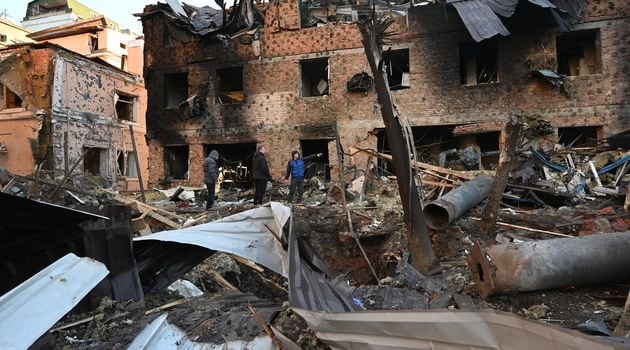
G7 nations have escalated warnings to Iran over military co-operation with Russia, including the transfer of advanced rockets, saying they are preparing to hit Tehran with a new wave of sanctions.
Washington has not confirmed that short-range ballistic missiles have been shipped from Iran to Moscow, but a senior administration official said negotiations between Russia and Iran over the shipments had been “actively advancing”.
The G7 said on Friday it was “prepared to respond swiftly and in a co-ordinated manner, including with new and significant measures against Iran”, if Tehran continued to supply missiles or technology to Russia.
“We are extremely concerned about reports that Iran is considering transferring ballistic missiles and related technology to Russia,” the G7 statement said. Missile transfers “would add to regional destabilisation and represents a substantive material escalation in its support for Russia’s war in Ukraine”.
The statement comes amid mounting concern in western capitals about Iran’s military support for Russia in its war in Ukraine while the US and its allies rush to send more lethal aid to Kyiv.
The US and its partners are pushing ahead with their response to Iran as if the transfer of ballistic missiles has not happened yet, but “there’s a real danger that it could”, the official said.
Among the sanctions under consideration would be a ban on flights from Iran Air, the country’s flagship carrier, into Europe. The US has imposed hundreds of sanctions on the Islamic republic since former president Donald Trump unilaterally withdrew from the 2015 nuclear deal Tehran signed with world powers.
“The point being this is not business as usual,” the senior official said.
The EU and US recently announced plans to provide stopgap funding for Ukraine even as Republicans in Congress continue to block billions of dollars in additional American aid for Kyiv.
The official said Ukrainian front lines were becoming “more vulnerable”. In recent weeks, while Ukrainian units were forced to ration their dwindling supply of artillery shells, Russian troops captured the eastern industrial town of Avdiivka and have continued to attack at five key points along the 1,000km front line.
Kyrylo Budanov, the head of Ukraine’s military intelligence directorate, said in February that Iran had not yet supplied missiles to Moscow. A senior Ukrainian official said this week that Kyiv still had no evidence proving Iran had supplied Russia with missiles, but said it was aware of discussions about them between Tehran and Moscow.
In return for Iran’s support on the battlefield, “we know Russia has been offering Tehran unprecedented defence co-operation”, the US official said. “Iran is seeking billions of dollars’ worth of military equipment from Russia.”
Under heavy US sanctions and with its own strained defence industrial base, the Kremlin has turned to Iran and North Korea to rearm. Tehran has provided drones, guided aerial bombs, artillery and ammunition, all of which Russia has used to attack Ukraine “with real impact”, the US official said.
Iranian officials have previously denied that the republic’s drones were being used in Ukraine.
Russia has used Iranian-made Shahed loitering drones since the autumn of 2022 to strike military and civilian infrastructure across Ukraine, with many of the attacks resulting in civilian deaths. Russian forces typically launch them in waves of dozens at a time to try to get past Ukrainian air defences. Several dozen Shahed drones destroyed residential and commercial buildings in at least eight Ukrainian regions this week alone, according to Kyiv’s military.
Moscow initially wavered on a ballistic missile deal with Tehran out of concern that Kyiv’s allies would supply it with long-range rockets that could penetrate deep into Russian territory. The US began supplying Ukraine with Army Tactical Missile Systems, known as ATACMS, late last year. The missiles, built by Lockheed Martin, have a maximum range of 300km, though those in Kyiv’s arsenal are older versions with a 165km range.
The UK and France have also given Ukraine longer-range Storm Shadow and Scalp missiles that have been used to strike Russian command and control centres and other various military targets deep behind the front line. – Copyright The Financial Times Limited 2024















